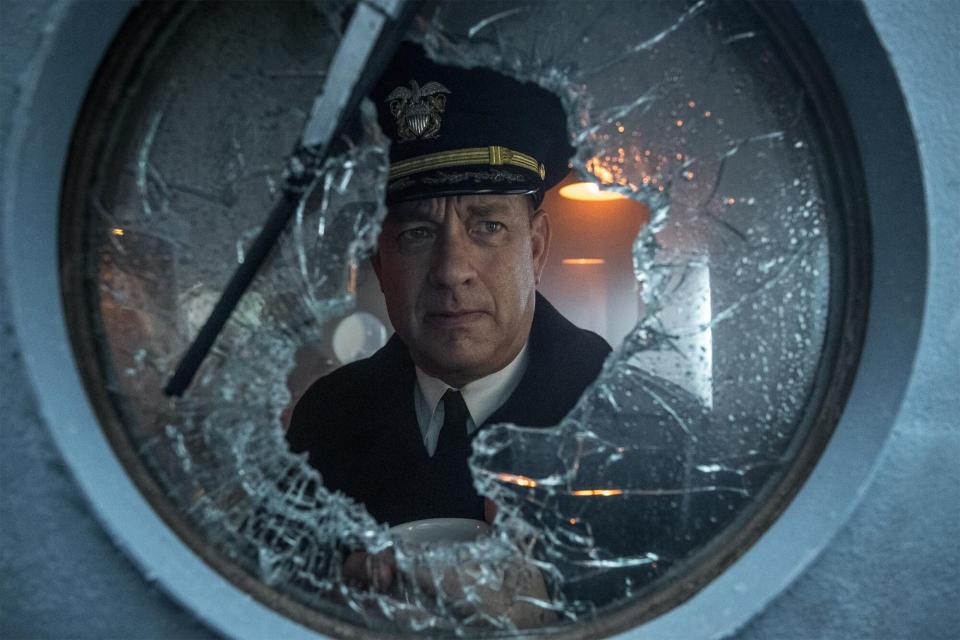Tom Hanks and Greyhound director on ensuring authenticity in the World War II drama
If you're making a World War II movie with Tom Hanks, you'd better do your research.
With a screenplay written by the Oscar-winning actor, Greyhound (out Friday, July 10 on AppleTV+) is inspired by historical events and adapted from C.S. Forester’s 1955 novel The Good Shepherd. The tense story follows a US Navy Commander (played by Hanks) under attack from Nazi U-boats in early 1942, right after America entered the Second World War. Since Hanks admits he reads history books for pleasure, and has starred in multiple World War II projects by this point, director Aaron Schneider (Get Low) had to make sure he was up to speed when signing on to helm the movie.
After sitting down with Hanks for a few hours to discuss the film, Schneider put together a website to share all the research he had compiled with the crew, including images and YouTube links on uniforms, procedure, onboard analog computers and more that ensured he was immersed in the project's authenticity. "I just submerged myself in that whole world so that I could find interesting ways, not only to tell the story on the page, but also to tell the story of the destroyer and the equipment they use, which is a big part of understanding and appreciating the dedication and the hard work that goes into these sailors' lives," he says. "I got pretty in-depth with it."

Niko Tavernise/TriStar Pictures
In order to ensure that authenticity reached the audience, Schneider and his crew used the USS Kidd in Louisiana to act as the movie's fictional USS Keeling (call sign Greyhound) and the main location for the shoot. "It's a highly preserved World War II ship," says the director. "It's the only World War II Destroyer still in its World War II configuration which was important because a lot of them got modified in the Vietnam War and the wars that followed." For the many scenes that take place in and around the navigating bridge outside the pilot house, the filmmaker built a set on a gimbal and matched it to the real ship down in Baton Rouge.
Adding more realness to the tense drama is the Navy jargon that is introduced immediately, without any easing in for the viewer. Naturally, it takes a moment for the audience to tune its ear to that level of highly specific vernacular but, as Schneider explains, that was fully intentional.
"That veracity lends a drama to it," he says. "The audience is submerged in the culture of this emergency situation in a radio control tower. There's all this dialogue — maybe some of which you don't fully understand — but it doesn't take long to figure out something's going on. The drama lives underneath the procedural dialogue. If you don't understand what he's saying yet and you don't understand what that thing does yet, that's fine with us because that's part of the experience. From the beginning, this was Tom's goal as a screenwriter. This was what fascinated him: the idea of throwing the audience into this world right off the shoulder of this man we haven't met yet. From the get-go, you're behind and you've got to catch up and it's up to you to engage and try to make some sense of what it means."
Once caught up and fully immersed in the movie, Hanks hopes the audience — like him — will see the parallels to present times. "As a guy who goes back to World War II again and again, I see a direct correlation to life as it's lived right now," he says. "I see the same questions being asked and I see the same solutions being pursued in stories of World War II, despite them being period pieces, despite them being museum pieces that recreate a world. To me, it's always been about: What would we do if we were in those same circumstances? And guess what? We are in many of those circumstances right now."
Greyhound arrives on Apple TV+ July 10.
Related content:

